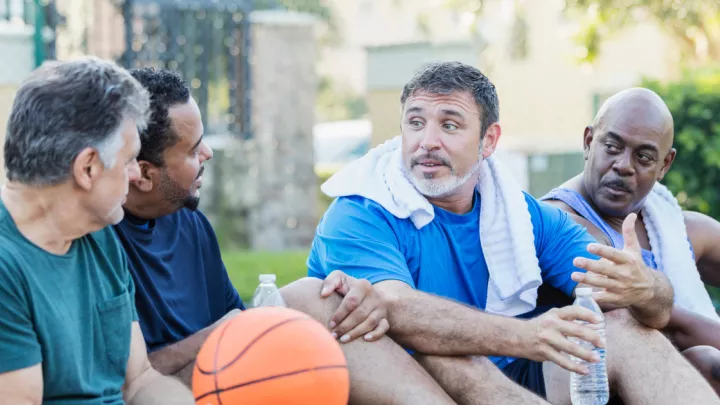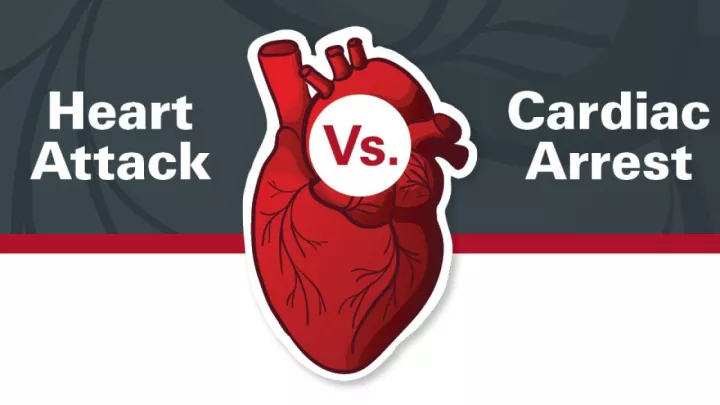Innovative 'frozen elephant trunk' aortic aneurysm surgery saves woman's life

Advancements in surgical techniques and solutions are offering life-saving treatment for patients with complex aortic aneurysms. One such innovation saved the life of Moe Wenke.
When doctors found that Wenke had an aortic aneurysm from a simple chest X-ray, she was surprised because she felt no symptoms. This a common occurrence since aortic aneurysms typically don't show signs and are often found by accident.
A worn-out hip became a blessing in disguise
Wenke, from Pender, Nebraska, saw her primary doctor when her left leg began to give her problems. When it became apparent that she needed a hip replacement, she was referred to an orthopaedic surgeon who scheduled the surgery for early 2020. "All was a go until I flunked the pre-op exam," she recalls. "They found a spot on one lung and an aortic aneurysm from my chest X-ray. Surprise! The entire plan for my medical tune-up was changed!"
The spot on Wenke's lung had to be addressed first, and her immediate decision was to go to Nebraska Medical Center due to its excellent reputation.
A multidisciplinary team of experts made all the difference
The first part of the plan was for Muhammad Ashraf, MBBS, Nebraska Medicine infectious diseases expert, to perform a lung biopsy. Thankfully, no cancer was present, and everyone celebrated.
Aleem Siddique, MBBS, Nebraska Medicine thoracic and cardiac surgeon, and Kevin Garvin, MD, Nebraska Medicine orthopaedic surgeon, joined the medical team to determine which to address next – the hip or the aneurysm. The group decided the hip replacement needed to happen first.
"To complicate everything, COVID hit," adds Wenke. "I was told to isolate at home and be careful. What else could I do with a crippled hip and the risk of an aneurysm breaking? Somehow we all muddled through!"
In Early 2021, Wenke successfully received a new hip, spent one night in the hospital and recovered nicely with the help of home health care and physical therapy.
"Dr. Siddique and my case manager, Margaret Peterson, took it from there," she says. "Dr. Siddique was positive he could fix my aortic aneurism, and Margaret took much stress from me by making all my appointments and scheduling tests before surgery. She became my logistics angel."
Next, Jonathan Thompson, MD, Nebraska Medicine vascular surgeon, performed a carotid subclavian bypass procedure to make the heart surgery easier.
"In August 2021, I bravely walked in for the biggie. I had total trust in the doctors and staff," adds Wenke.
How the frozen elephant trunk aortic aneurysm surgery works
The aorta is a long blood vessel, and an aneurysm can occur in many locations. Although the aorta starts next to the heart, it travels to the brain, arms, back of the chest and abdomen, then divides into the legs.
The surgical technique was given its name due to its resemblance to an elephant trunk. A stent graph (a hollow tube structure) is placed inside a blood vessel during conventional surgery. The hollow tube serves as the frame and remains if a future procedure is necessary.
In Wenke's case, the procedure was used to address an aneurysm of the ascending aorta, aortic arch and proximal descending aorta. It was the first time in the region this endovascular stent graft had been used in this specific way.
"We used a hybrid approach by replacing the ascending aorta and arch. At the same time, we used the Cook endovascular stent graft, as a frozen elephant trunk, to cover the portion of the aneurysm that extended into the descending aorta," explains Dr. Siddique. "The frozen elephant trunk procedure enabled us to avoid a larger, more extensive operation."
After a long, successful surgery, Wenke was most surprised that she experienced minimal pain but equally astonished at how weak she had become. "Everything took so much effort," she recalls. "I was in the hospital for a week or so before graduating to two weeks of rehab, then gradually getting back on my feet before beginning outpatient cardiac rehab."
"Moe is a robust lady – a real go-getter," says Dr. Siddique. "Because the location of her aneurysm was difficult, we felt combining a conventional surgical technique with the frozen elephant trunk tube would make it less involved, increasing her chances of recovering faster. Overall it proved to be a good approach for her, and she has done very well."
How are aortic aneurysms found if there are no symptoms?
Depending on the location, aortic aneurysms are usually spotted while looking for something else via ultrasound, chest X-ray or CT scan.
Aortic aneurysm causes and treatments
The most common reason aortic aneurysm may occur is when people have an underlying abnormality of the blood vessel wall, causing it to enlarge. It may be hereditary, so if you have a family member with an aortic aneurysm, talk with your doctor.
Other causes may include:
- Trauma or injury to the blood vessel
- Infection
- Smoking
- High blood pressure
- Genetics
An aortic aneurysm does not cause high blood pressure or an irregular heartbeat.
Treatment options include:
- Surgical repair
- Medication
- Regular follow-ups and monitoring
- Lifestyle changes, such as controlling blood pressure, avoiding smoking and regular exercise
- Avoid strenuous activity (nothing over 50 pounds, no contact sports, avoid straining)
Nebraska Medicine is the only health system in the region with an advanced, comprehensive aortic program, offering highly skilled experts for diagnosis and treatment, including minimally invasive and hybrid surgical techniques, geneticists and ongoing research.
Wenke felt her care at Nebraska Medical Center was excellent in every way. Although intimidated by the large facility, she immediately felt like she had known her doctors and staff all her life.
"When my medical tune-up began, I had many fears of not being able to find replacement parts for this old model – I will be 80 years old this fall," Wenke says. "But let me shout! I'm back to being an active, feisty lady because of the Nebraska Medicine doctors and all their support staff, faith, family and friends. I couldn't be more blessed."







